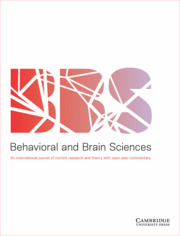No CrossRef data available.
Article contents
Relations of lexical access to neural implementation and syntactic encoding
Published online by Cambridge University Press: 01 April 2004
Abstract
How can one conceive of the neuronal implementation of the processing model we proposed in our target article? In his commentary (Pulvermüller 1999, reprinted here in this issue), Pulvermüller makes various proposals concerning the underlying neural mechanisms and their potential localizations in the brain. These proposals demonstrate the compatibility of our processing model and current neuroscience. We add further evidence on details of localization based on a recent meta-analysis of neuroimaging studies of word production (Indefrey & Levelt 2000). We also express some minor disagreements with respect to Pulvermüller's interpretation of the “lemma” notion, and concerning his neural modeling of phonological code retrieval. Branigan & Pickering discuss important aspects of syntactic encoding, which was not the topic of the target article. We discuss their well-taken proposal that multiple syntactic frames for a single verb lemma are represented as independent nodes, which can be shared with other verbs, such as accounting for syntactic priming in speech production. We also discuss how, in principle, the alternative multiple-frame-multiple-lemma account can be tested empirically. The available evidence does not seem to support that account.
Information
- Type
- Authors' Response
- Information
- Copyright
- Copyright © Cambridge University Press 2004

